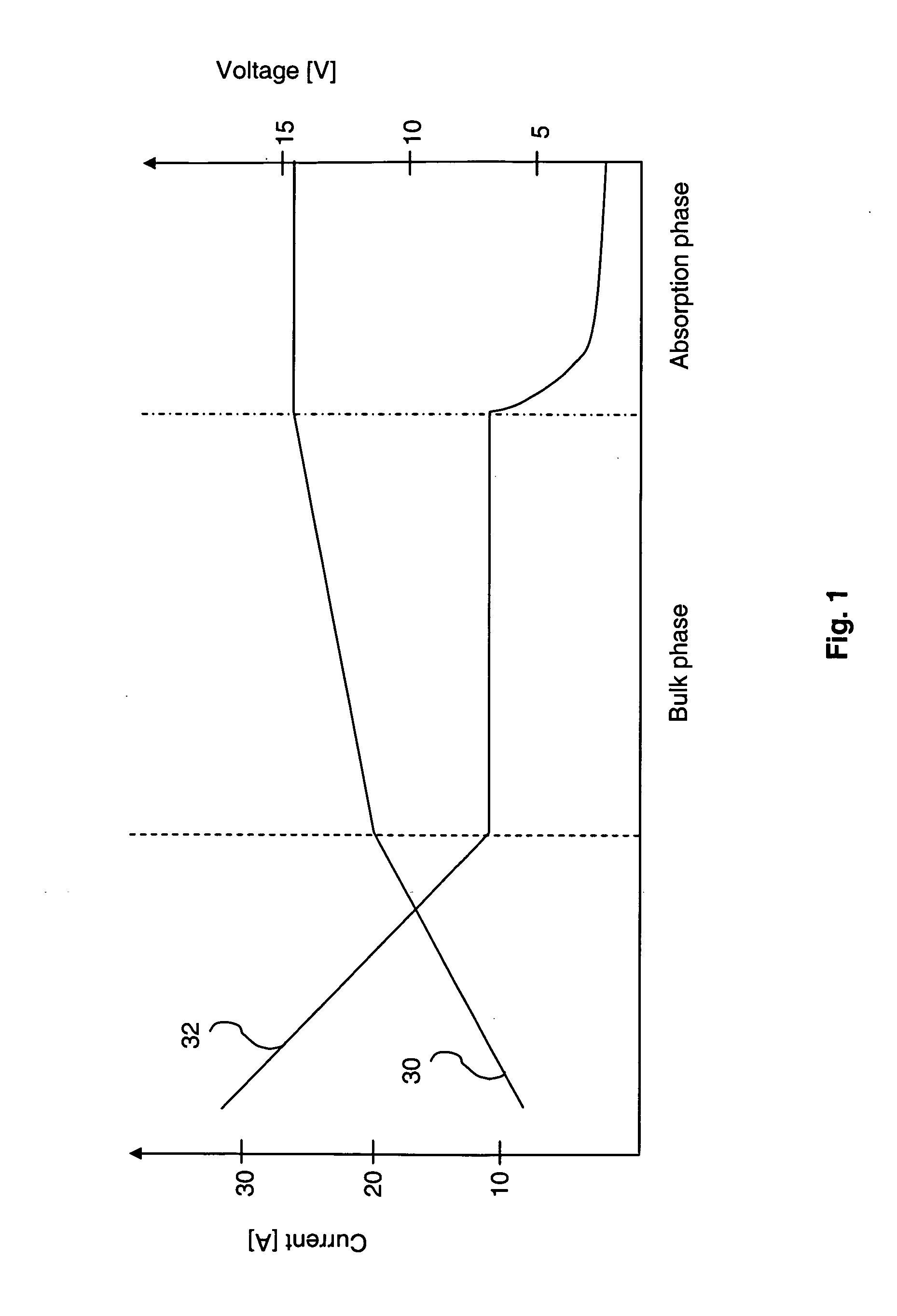Battery charging device
- Summary
- Abstract
- Description
- Claims
- Application Information
AI Technical Summary
Benefits of technology
Problems solved by technology
Method used
Image
Examples
first embodiment
[0034] Referring first to FIG. 2, the battery charging device according to the present invention will be described. The battery charging device 100 is connectable to a alternating voltage generating device 112, such as a generator, alternator or other type of charging device, at an input terminal 114. At a first output terminal 115, the system 100 is connectable to a first battery 118, and at a second output terminal 116 the system 100 is connectable to a second battery 119. For example, the first battery 118 may be a supply battery and the second battery 119 may be a starter battery. The battery charging device 100 comprises a first DC / DC converter 120 arranged between the first input terminal 114 and the first output terminal 115. In a preferred embodiment, the first DC / DC converter 120 is adapted to supply a controlled charging curve and to handle a current in the range of 1-25 A. Furthermore, a first connection means 122 is arranged in parallel with the first DC / DC converter 120...
second embodiment
[0037] With reference now to FIG. 3a, the battery charging device according to the present invention will be described. The battery charging device 200 is connectable to an alternating voltage generating device 212, such as a generator, alternator or other type of charging device, at an input terminal 214. At a first output terminal 215, the system 200 is connectable to a first battery 218, and at a second output terminal 216 the system 200 is connectable to a second battery 219. For example, the first battery 218 may be a supply battery and the second battery 219 may be a starter battery. The battery charging device 200 comprises a first DC / DC converter 220 arranged between the first input terminal 214 and the first output terminal 215. In a preferred embodiment, the first DC / DC converter 220 is adapted to supply a controlled charging curve and to handle a current in the range of 1-25 A. Furthermore, a first connection means 222 is arranged in parallel with the first DC / DC converte...
fifth embodiment
[0043] Turning now to FIG. 4, the battery charging device according to the present invention will be described. The battery charging device 300 is connectable to an alternating voltage generating device 312, such as a generator, alternator or other type of charging device, at an input terminal 314. At a first output terminal 315, the system 300 is connectable to a first battery 318, and at a second output terminal 316 the system 300 is connectable to a second battery 319. For example, the first battery 318 may be a supply battery and the second battery 319 may be a starter battery. The battery charging device 300 comprises a first DC / DC converter 320 arranged between the first input terminal 314 and the first output terminal 315. In a preferred embodiment, the first DC / DC converter 320 is adapted to supply a controlled charging curve and to handle a current in the range of 1-25 A. Furthermore, a first connection means 322 is arranged in parallel with the first DC / DC converter 320. P...
PUM
 Login to View More
Login to View More Abstract
Description
Claims
Application Information
 Login to View More
Login to View More - R&D Engineer
- R&D Manager
- IP Professional
- Industry Leading Data Capabilities
- Powerful AI technology
- Patent DNA Extraction
Browse by: Latest US Patents, China's latest patents, Technical Efficacy Thesaurus, Application Domain, Technology Topic, Popular Technical Reports.
© 2024 PatSnap. All rights reserved.Legal|Privacy policy|Modern Slavery Act Transparency Statement|Sitemap|About US| Contact US: help@patsnap.com










